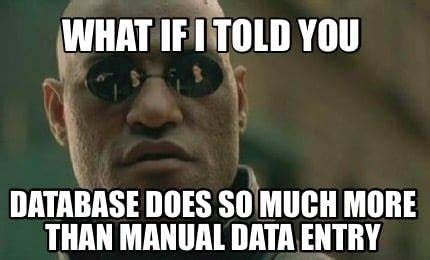Before we start discussing the path to becoming a Data Scientist, it's important to note that it's not a simple domain that can be mastered in a short amount of time. It requires a significant amount of learning, practical experience, and delivering value to the end product.
Despite the rapid growth of technology, the introduction of various AI frameworks, and the abundance of job opportunities, there is no set roadmap to becoming a Data Scientist. However, I can provide a general overview of what you can learn, why you should learn it, and how it can be applied to your future data science projects. Let's get started.
🐍 Start with Python
Everyone says this and I will say the same! Start learning Python if you want to stay in the race.
It is a fact that knowing a programming language is essential for pursuing a career in data science, and Python is considered the most suitable language for this field.
Python is a popular programming language for data science due to its flexibility, ease of use, and a large community of users. Here are some of the key libraries and tools in Python that are commonly used for data science:
NumPy: a library for numerical computing with Python, which provides support for arrays and matrices, as well as mathematical functions and linear algebra operations.
Pandas: a library for data manipulation and analysis, which provides data structures such as data frames and series, and methods for data cleaning, transformation, and visualization.
Matplotlib: a library for data visualization, which provides a wide range of plotting functions and styles.
There are many other Python libraries and tools for data science like Scikit-Learn and TensorFlow but we will learn about them in the upcoming sections of this blog. These are some of the most widely used and well-established ones. Learning how to use these libraries effectively can help you become proficient in data science with Python.

Don't expect me to share a Python course! There are just a lot of courses, articles and blogs which are available for free just search and start learning.
So once you learned Python language after that what? Don't sit idle go and create some projects!
📊 Statistics
If you hate maths this field is not for you buddy. But if you love maths, You are welcome! Just give yourself some time.
Mathematics and statistics are essential components of data science, forming the foundation for Machine Learning and Deep Learning models. Therefore, for those who love math and are interested, exploring these concepts further would be valuable.

Statistics is a fundamental part of data science, providing the mathematical tools and techniques to analyze, interpret, and draw conclusions from data. Here are some of the key statistical concepts and techniques that are important for data science:
Descriptive statistics: Descriptive statistics summarize and describe the features of a dataset, such as the mean, median, mode, range, and standard deviation. (Yes the one that was taught in schools)
Inferential statistics: Inferential statistics involves making predictions or drawing conclusions about a population based on a sample of data.
Probability: Probability theory is the foundation of statistics and provides the framework for understanding random events and uncertainty. (Not using a deck of cards)
By mastering these statistical concepts and techniques, data scientists can extract insights from data and make data-driven decisions with greater confidence.
So, Ladies and Gentlemen, Great Data Scientists are always clear with his/her concepts of statistics.
🗄 Databases!
How will you be able to fight a war without a weapon?
It is the same case in data science. How will you create a product or make decisions if you don't have a data in your hand to work?

Data science often involves working with large and complex data sets, which are typically stored in databases. Here are some of the key database tools and technologies that are important for data science:
Relational databases: The most common type of database used in data science, with tools such as MySQL, PostgreSQL, and SQLite. They store data in tables with predefined relationships between them and use SQL for querying and manipulation.
NoSQL databases: NoSQL databases are used for storing and managing unstructured and semi-structured data, such as MongoDB, Cassandra, and HBase.
Data warehousing: Data warehousing is a technique for storing and managing large volumes of structured and unstructured data from various sources in a single, centralized repository. Tools such as Amazon Redshift, Google BigQuery, and Microsoft Azure Synapse Analytics are commonly used for data warehousing.
Learning all the technologies can be difficult for a beginner. It's best to choose one from each type and gradually increase your knowledge. Once you've learned all the necessary tools and concepts, you can become a Data Engineer who handles the creation, management, and deployment of datasets for companies.
Yes Being a Data Engineer is not easy at all. It is like working in an Office made of Glass walls. A small mistake in handling the data and the next moment the whole data is gone.
But they get paid well!
🤖 Machine Learning
Machine learning is a core component of data science because it provides the algorithms and techniques for building predictive models from data. In many data science applications, the goal is not only to understand and visualize the data but also to make predictions and decisions based on it.
This is where machine learning comes in, as it provides the tools to build models that can learn from the data and make accurate predictions or decisions on new, unseen data.

Some of the key benefits of machine learning in data science include:
Ability to handle large and complex datasets: Machine learning algorithms can handle large and complex datasets that are difficult or impossible to analyze with traditional statistical methods.
Predictive modelling: Machine learning enables predictive modelling, which can be used to forecast future trends, identify patterns, and make accurate predictions.
Automation: Machine learning algorithms can automate many tasks in data science, such as data cleaning, feature selection, and model selection.
Personalization: Machine learning algorithms can be used to build personalized recommendations for products, services, or content based on a user's past behaviour and preferences.
Optimization: Machine learning algorithms can be used to optimize business processes and operations, such as supply chain management, resource allocation, and logistics.
Overall, machine learning is a crucial tool for data scientists to make sense of complex data and make accurate predictions and decisions based on it. Scikit-Learn is an amazing Python Library that can help you to build machine-learning models.
To be honest! Machine Learning is not what you think. It is all maths, probability and statistics. It feels tiring at the start but you will become good if you keep working
🕸Deep Learning
Deep learning is a subfield of machine learning that is particularly useful in data science because it enables the development of highly accurate models for tasks such as image and speech recognition, natural language processing, and recommendation systems. Here are some key reasons why deep learning is important in data science:
Handling large and complex datasets: Deep learning algorithms are particularly well-suited to handling large and complex datasets, which can be difficult to analyze with traditional machine learning techniques.
Feature extraction: Deep learning algorithms can automatically extract features from data, which can be used to build more accurate and efficient models.
Non-linearity: Deep learning algorithms can model non-linear relationships between variables, which can be critical in many real-world applications.
State-of-the-art performance: Deep learning algorithms have achieved state-of-the-art performance in many domains, including computer vision, natural language processing, and speech recognition.
Transfer learning: Deep learning models can be fine-tuned for specific tasks by using pre-trained models as a starting point. This can greatly reduce the amount of data and computing resources required to build accurate models.

Python libraries like TensorFlow, Keras, PyTorch and Theano are some of the useful libraries that can help you to build deep learning models as well in the field of Computer Vision and Natural Language Processing.
🦾 AIOps

AIOps (Artificial Intelligence for IT Operations) is a growing field that uses machine learning and other AI techniques to automate and optimize IT operations. Here are some AIOps tools that can be useful for data scientists:
Datadog: Datadog is a cloud-based monitoring platform that provides a range of AIOps tools for IT operations. It offers various functions which can be useful for identifying issues in complex IT environments.
Kubeflow: Kubeflow is an open-source platform for deploying and managing machine learning workflows on Kubernetes. It provides a range of tools for building and deploying models.
MLflow: MLflow is an open-source platform for managing machine learning projects and experiments. It provides a range of tools for tracking experiments, packaging code, and deploying models.
Airflow: Apache Airflow is an open-source platform for building and managing data pipelines. It provides a way to automate the deployment and scheduling of machine learning tasks, including data preparation, model training, and evaluation.
AWS SageMaker: AWS SageMaker is a cloud-based platform for building, training, and deploying machine learning models. It provides a range of tools for data preprocessing, model training, and deployment, as well as integration with other AWS services.
Overall, these MLOps tools provide a range of powerful tools and best practices for managing the machine learning lifecycle. By adopting these tools, data scientists can streamline their workflow and improve their productivity, enabling them to build more accurate and efficient models that enable data-driven decision-making and unlock insights that may have otherwise gone unnoticed.
This thing is new in the market. So, not many resources might be available for you on the internet but who knows you might find a gold mine.
Don't just stop here! There are countless more things to discover and master in the field of data science. Consider learning about topics such as computer vision, natural language processing, artificial intelligence, and cloud computing to enhance your technical expertise in this field. As a data scientist, you must constantly strive to learn and stay up-to-date with new technologies that emerge.
The key to success in data science is to never stop learning. With new advancements in technology occurring all the time, it's important to stay on top of the latest trends and developments.
Best of luck on your data science journey! I hope you found this blog helpful. Please leave your feedback in the comments below, and I'll see you in the next post.
